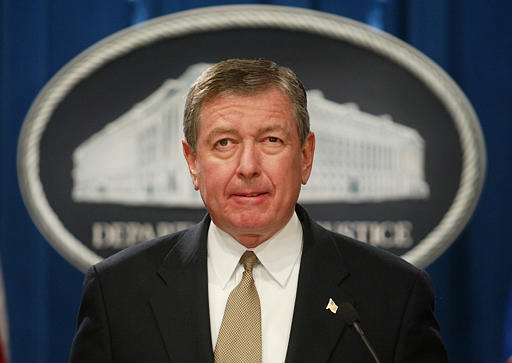In Ashcroft v. Free Speech Coalition, 535 U.S. 234 (2002), the Supreme Court struck down portions of the federal Child Pornography Prevention Act (CPPA) of 1996 that banned “virtual child pornography,” which the justices said was neither obscene nor actual child pornography as defined by previous decisions.
CPPA banned virtual child pornography
Congress began proscribing child pornography in 1977, and the law at issue in this case was their most recent attempt to broaden the ban by including any depiction that “appears to be” or “conveys the impression” of a minor engaging in sexually explicit conduct.
These sections of CPPA represented an attempt to outlaw virtual child pornography, which Congress was particularly concerned about due to the growth of computer technology and the Internet.
Though no actual children were involved, the material in question often used computer imaging, adults who appeared to be minors, or both to create the impression of minors engaging in sexual activity.
Congress said ban protected children
Congress reasoned that pedophiles might “whet their own sexual appetites” with this material “thereby increasing the creation and distribution of child pornography and the sexual abuse and exploitation of actual children.”
Members of Congress also contended that pedophiles might use virtual child pornography to encourage children to participate in sexual activity. They argued, furthermore, that the existence of virtual material made it harder to distinguish from actual child pornography and therefore more difficult to prosecute the latter.
Court said ban violated the First Amendment
Justice Anthony M. Kennedy delivered the 6-3 majority opinion, citing two key pornography precedents.
In Miller v. California (1973), the Court had articulated a test to determine obscenity: if the average person in the community would find the work’s predominant theme “prurient”; if the material depicts sexual conduct in a “patently offensive way”; and if when taken as a whole the material “lacks serious literary, artistic, political, or scientific value.”
In the other precedent, New York v. Ferber (1982), the Court upheld prohibitions on the production and distribution of actual child pornography because of its direct link to the sexual abuse of minors.
Kennedy wrote that the Child Pornography Prevention Act was overbroad because it banned a “significant universe of speech that is neither obscene under Miller nor child pornography under Ferber.”
Kennedy said some films, like Romeo and Juliet, could be considered child pornography
As examples of the kind of material that could be prohibited under CPPA, Kennedy listed a picture in a psychology manual and well-known, award-winning theatrical films that portray minors having sex, such as Romeo and Juliet and Traffic.
He explained that “in contrast to Ferber, CPPA prohibits speech that records no crime and creates no victims by its production.” Indeed, Kennedy noted that the majority in Ferber reasoned that young-looking adults could be used if necessary for scientific and artistic purposes.
As for the argument that virtual child pornography could be used by pedophiles to seduce children into sexual activity, Kennedy countered that other enticements, such as cartoons and candy, could just as easily be used.
Dissenters argued some virtual child pornography could be banned
Chief Justice William H. Rehnquist and Justices Sandra Day O’Connor and Antonin Scalia dissented in part, stating that Congress could ban virtual child pornography but not “youthful-adult pornography,” reasoning that these were two distinguishable categories of pornography.
O’Connor said that the phrase “conveys the impression” as used in the statute applies to youthful-adult pornography, which is constitutionally protected because it is plain to the viewer that there are no real children, as in cartoons or sketches.
O’Connor said, however, that the phrase “appears to be” essentially means “virtually indistinguishable from” an actual minor, so that viewers would not be able to tell the difference. These three justices therefore reasoned that such virtual child pornography could be banned.
This article was originally published in 2009. Artemus Ward is professor of political science faculty associate at the college of law at Northern Illinois University. Ward received his Ph.D. from the Maxwell School of Citizenship & Public Affairs at Syracuse University and served as a staffer on the House Judiciary Committee. He is an award-winning author of several books of the U.S. Supreme Court and his research and commentary have been featured in such outlets as the New York Times, Los Angeles Times, Associated Press, NBC Nightly News, Fox News, and C-SPAN.

